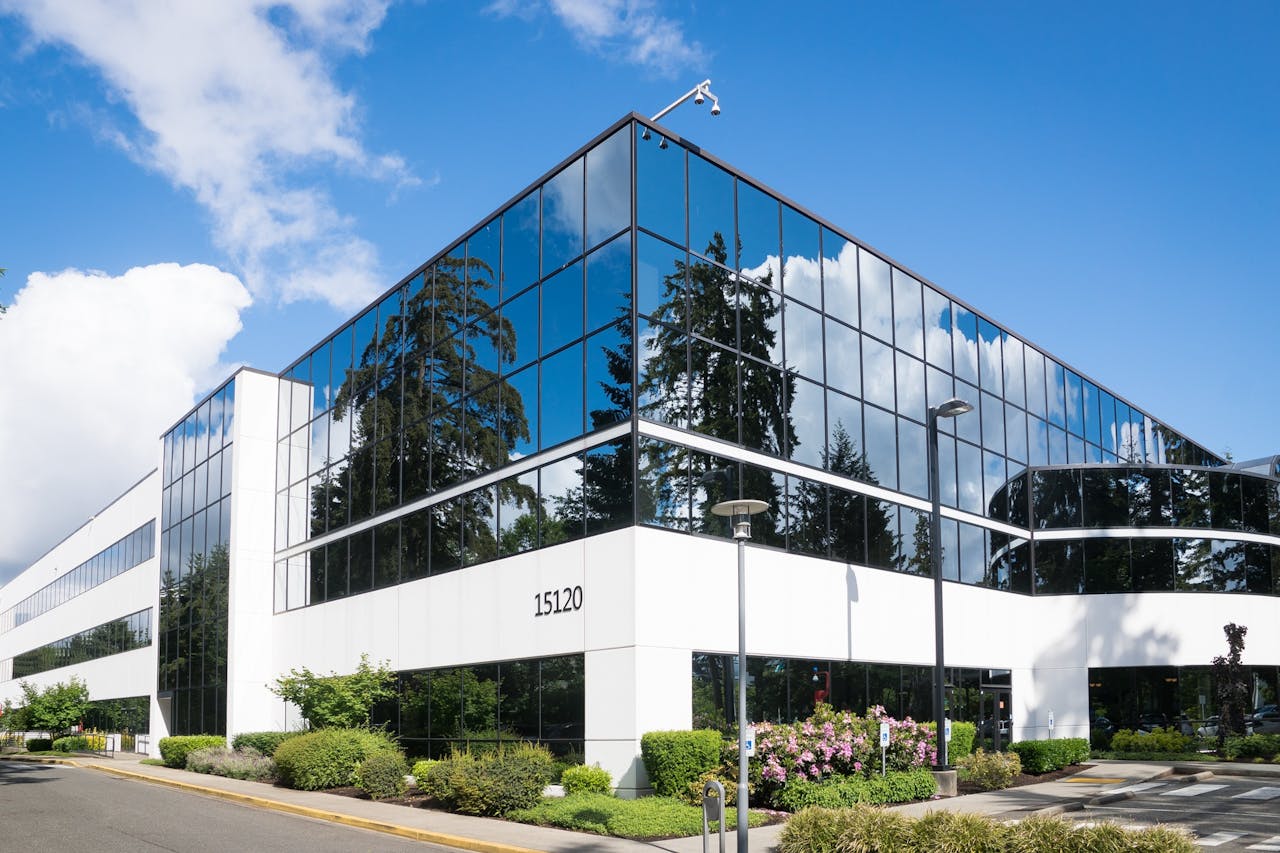Creating a realistic pre-construction budget is a crucial stage in any construction project. It acts as the engine driving your project’s funding and serves as an essential tool for controlling project costs. As general contractors, we understand that a well-crafted budget establishes a critical baseline for measuring performance against actual costs once construction begins. Have you considered how a thorough pre-construction budget could impact your next project?
At EB3 Construction, we’ve observed firsthand how a meticulously planned budget effectively manages costs, keeps the project on track, and prevents unplanned issues from derailing progress. By investing time upfront in financial planning, we lay the groundwork for smoother project execution and improved cost management throughout the build.
From securing adequate construction funding to providing a framework for key decisions, the pre-construction budget is essential for project success. It allows us to anticipate challenges, allocate resources wisely, and deliver projects that meet both quality standards and financial targets. During the development process, we work closely with developers and property owners to align the budget with project goals and set realistic expectations from the start.
How Do You Determine Project Requirements for an Accurate Budget?

Determining comprehensive project requirements forms the foundation for creating an accurate budget. We take a systematic approach to identify and document all key requirements from both external and internal stakeholders. This process involves several critical steps:
- Defining the full scope of work
- Specifying material needs and quality standards
- Estimating labor requirements across project phases
- Understanding the proposed methodology and workflow
- Assessing quality tolerance expectations
- Evaluating potential risks and mitigation strategies
We begin by examining comparable past projects to establish a baseline. This provides valuable insights into typical requirements and highlights any unique elements for the current project. However, we don’t rely solely on historical data, as each project has its own nuances that must be carefully considered.
An often overlooked aspect is accounting for regulatory and compliance requirements. We thoroughly research necessary permits, approvals, environmental assessments, and safety protocols since these can significantly impact costs if not factored in early. For instance, failing to budget for specialized environmental impact studies could lead to major overruns later in the project.
Documenting the assumptions behind each requirement is essential for maintaining an accurate, updatable budget baseline. As the project progresses, we can revisit these assumptions and adjust cost estimates if scenarios change. This approach allows us to provide stakeholders with a realistic budget grounded in well-defined requirements while remaining flexible to refine projections as more information becomes available.
By taking a comprehensive view of project requirements—from technical specifications to regulatory compliance—we establish a solid foundation for precise cost budgeting. This diligence in the requirements gathering phase pays dividends throughout the project lifecycle by minimizing surprises and enabling more effective financial management.
What Components Should Be Included in Your Pre-Construction Budget?
A comprehensive pre-construction budget breaks down the project into various components to ensure all costs are accounted for. At EB3 Construction, we typically include the following key elements when preparing budgets for our clients:
Hard Costs
Hard costs encompass the physical construction and site work expenses. These typically include:
- Materials (concrete, steel, lumber, finishing materials, etc.)
- Labor costs for construction workers and trades
- Heavy equipment rental or purchase
- Site preparation and earthwork
- Landscaping
Soft Costs
Soft costs are less visible but essential expenses that support the project. Common soft costs we factor in are:
- Architectural and engineering fees
- Permits and inspections
- Insurance and bonds
- Legal fees
- Property taxes during construction
Contingency Buffers
We always recommend including contingency buffers to account for unexpected expenses. This provides flexibility to handle issues like:
- Design changes or revisions
- Material cost increases
- Weather delays
- Unforeseen site conditions
Typically, we advise setting aside 5–10% of the total budget for contingencies on standard projects. For more complex builds or renovations, a higher percentage may be prudent.
Inflation Considerations
With ongoing market volatility, we closely monitor inflation trends and factor them into our budgets. This may involve escalation clauses for material costs or accelerated timelines to lock in current pricing.
By breaking the budget down into these detailed components, we can more accurately estimate costs and allocate funds appropriately. This comprehensive approach helps keep projects on track financially from start to finish.
| Category | Budget Percentage Range |
|---|---|
| Housing | 25% – 30% |
| Food | 10% – 15% |
| Transportation | 10% – 15% |
| Utilities | 5% – 10% |
| Insurance | 10% – 25% |
| Savings | 10% – 20% |
| Personal | 5% – 10% |
| Medical | 5% – 10% |
| Entertainment | 5% – 10% |
| Giving | 1% – 10% |
| Miscellaneous | 5% – 10% |
While exact percentages vary by project, visualizing a typical budget breakdown can help clients understand relative cost proportions. We work closely with owners to prioritize spending based on their specific needs and goals.
Proper pre-construction budgeting requires experience and attention to detail. Our team leverages years of industry knowledge to create realistic, well-planned budgets that set projects up for success. By anticipating costs upfront, we help prevent budget overruns and keep your project on solid financial footing.
How Can You Track and Manage Your Pre-Construction Budget Effectively?

Effective pre-construction budget management involves a strategic approach that focuses on detailed tracking and proactive oversight. We implement several key practices to control costs and maximize project profitability:
Break Down the Budget
The project is divided into distinct phases or work packages, allowing us to compile performance data for each scope. This detailed approach serves two crucial purposes:
- It allows us to validate the accuracy of future estimates by comparing actual costs to projected figures.
- It enables us to identify weaknesses in service delivery or areas prone to overruns.
For instance, on a recent office complex project, isolating the foundation work as a separate phase showed that costs consistently exceeded estimates by 10-15% higher than predicted. This insight improved our bidding on subsequent projects.
Rigorously Track Scope Changes
Uncontrolled project scope changes can quickly erode profitability. We implement formal processes to:
- Document all change requests, regardless of their size
- Assess the cost and schedule impact of proposed changes
- Obtain proper approvals before proceeding
- Update budgets and schedules to reflect approved changes
Our change order tracking system flags any modifications exceeding 2% of the total budget for executive review, helping contain scope creep.
Monitor Time and Resource Allocation
Understanding how personnel time and resources are used is pivotal for profitability. We track employee hours on tasks, enabling us to:
- Identify inefficiencies where activities consume more hours than budgeted
- Reallocate resources to optimize productivity
- Provide more accurate time estimates for future projects
Track Actual vs. Estimated Costs
We maintain vigilant awareness of labor, materials, and equipment rentals, comparing them against initial estimates. This real-time tracking enables our team to:
- Make informed decisions about material substitutions or value engineering
- Adjust staffing levels or skill mix
- Identify and address cost overruns early before they escalate
Monitor Committed Costs
In addition to tracking actual expenses, we closely monitor committed costs through purchase orders and subcontracts. This forward-looking approach helps prevent unexpected overruns by offering visibility into upcoming expenses. We review committed costs weekly, allowing us to proactively manage cash flow and reallocate funds if needed.
By adhering to disciplined budget management practices, we maintain tight control over pre-construction budgets. This approach maximizes profitability while ensuring projects meet both financial and client expectations.
What Strategies Help Create More Accurate Pre-Construction Budgets?
At EB3 Construction, we understand that creating accurate pre-construction budgets is crucial for project success. We have developed several key strategies to ensure our budgets are as precise and realistic as possible:
Base Budgets on Evidence, Not Optimism
We begin by grounding our budgets in solid evidence rather than overly optimistic projections. Our estimators carefully scrutinize every line item, using data from similar historical projects to inform new estimates. This evidence-based approach enables us to create budgets that withstand real-world conditions.
Negotiate Effectively with Stakeholders
We have honed our negotiation skills to work productively with clients, subcontractors, and suppliers. By focusing on win-win outcomes, we often increase overall productivity, secure more competitive pricing, and collaboratively adjust project plans to optimize costs and efficiency. This cooperative approach helps keep budgets lean without compromising quality.
Implement Robust Project Accounting
Our project accounting practices extend beyond basic bookkeeping. We measure the financial performance of specific project phases, collecting detailed expense and time data throughout the build. This granular tracking provides real-time insights that allow us to make informed financial decisions as the project progresses.
Account for All Costs
We adopt a comprehensive view of project costs in our budgets. This includes factoring in overhead expenses such as office costs, insurance, and taxes. We also build in a reasonable profit margin and account for potential risks and uncertainties like adverse weather or market price fluctuations. This holistic approach results in budgets that are both competitive and financially viable.
Continuous Refinement
Creating accurate pre-construction budgets involves an ongoing process of learning and refinement. We regularly analyze budget performance across our portfolio of projects, identifying trends and refining our estimation techniques. This commitment to continuous improvement helps us deliver increasingly precise budgets over time.
By employing these strategies, we’re able to develop pre-construction budgets that provide a solid financial foundation for project success. Our clients can proceed with confidence, knowing their budget is based on real-world data and industry best practices.
Conclusion: Building Success Through Effective Pre-Construction Budgeting

Creating a realistic pre-construction budget is fundamental to construction project success. Experience has shown that thorough planning in the early stages yields benefits throughout the project lifecycle. By meticulously identifying requirements, breaking down all cost components, implementing robust tracking systems, and using data-driven estimating techniques, we can develop budgets that withstand real-world pressures.
Proper contingency planning is also crucial. We incorporate appropriate buffers to account for uncertainties without unnecessarily padding estimates. This balanced approach allows us to provide clients with reliable budgets while maintaining the flexibility to handle unforeseen circumstances.
Ultimately, an accurate pre-construction budget serves as the financial foundation for the entire project. It enables us to allocate resources appropriately, make informed decisions as the project progresses, and deliver results that meet or exceed client expectations. When we get the budget right from the start, it creates a positive ripple effect—enhancing profitability, stakeholder satisfaction, and overall project success.
As you approach your next construction project, we encourage you to apply these budgeting principles. Take the time to truly understand project requirements, leverage historical data, implement effective tracking mechanisms, and build in appropriate contingencies. With a solid budgetary foundation in place, you’ll be well-positioned to bring your vision to life on time and within budget.
Need expert guidance on pre-construction budgeting for your next project? Contact EB3 Construction to learn how our experienced team can help set your project up for success from day one.




